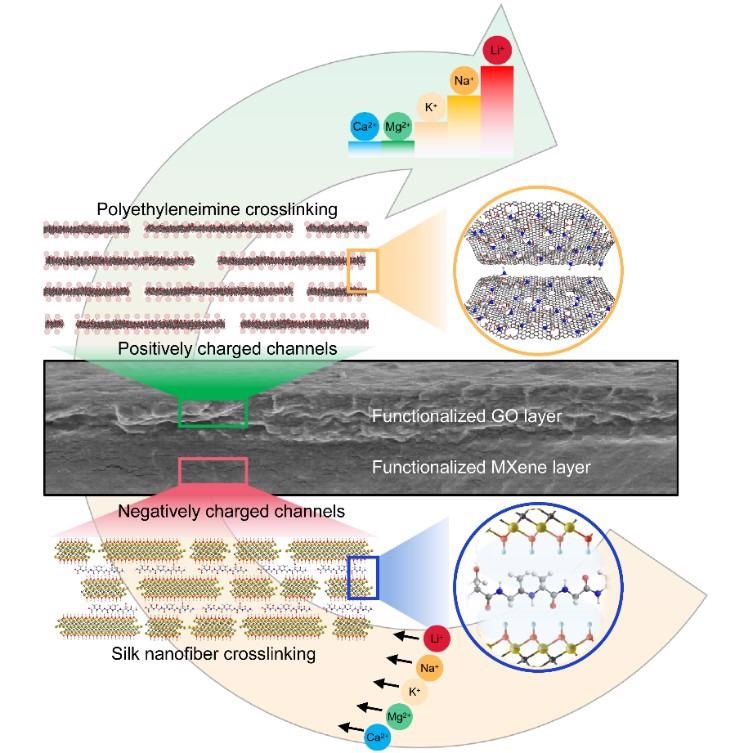Jan 4 2021
Lithium, an energy-critical element, is regarded as a geopolitically substantial resource. But lithium supply might not be sufficient to fulfill the constantly rising demand. Consequently, researchers are seeking new methods to extract lithium ions.
 Metal ion sieving using a bioinspired nanochannel membrane. Image Credit: Weiwen Xin.
Metal ion sieving using a bioinspired nanochannel membrane. Image Credit: Weiwen Xin.
Ion-selective membranes have been utilized widely even earlier for ion sieving and water treatment in electrodialysis technology. However, traditional membranes display low and pointless Li+ selectivity, which makes them inappropriate for meeting industry needs.
Recently, Chinese researchers have made improvements in the making and application of a bioinspired material that has the ability to achieve controlled ion transport and sieving, particularly for lithium-ion extraction.
This study was published in the journal Matter and was completed by Professor Liping Wen’s team at the Technical Institute of Physics and Chemistry of the Chinese Academy of Sciences and Professor ZHANG Qianfan’s team from Beihang University.
In this study, researchers made use of nanofibers, obtained from polyethyleneimine and natural silk, to decorate 2D nanosheets. The 2D nanosheets have been inspired by the biological structure in nature and are self-assembled layer-by-layer to create a nacre-like stacked structure. The composited membrane serves as an ion-gating heterojunction with asymmetrical nanochannels and opposite charges.
To be more detailed, the composited membrane shows higher toughness than other reported materials and natural nacre structures. The membrane is also able to efficiently control interlayer spacing and achieve stable ordered nanostructures.
Liping Wen, Professor, Chinese Academy of Sciences
The standard brick-and-mortar structure formed by nanosheets and nanofibers finds a long-time application in solutions. At the same time, the confined dehydration and charge-exclusion effects conduct Li+ via composited channels quickly.
Theoretical and experimental findings denote that Li+ exhibits an outstanding permeation rate that is significantly higher compared to that of K+, Na+, Ca2+, and Mg2+ as a result of its low charge and small radius.
When compared to mobilities in bulk, Li+ stays fundamentally consistent with the bulk value. By contrast, the other ions turn out to be less mobile compared to Li+ in bulk.
The approach of employing custom-made 2D membranes with geometrical, chemical and electrostatic heterostructures enables additional exploration of nanofluidic phenomena within nanochannel membranes for power generation or water treatment.
This study was financially supported by the National Key R&D Program of China, the National Natural Science Foundation of China, and the Strategic Priority Research Program of the Chinese Academy of Sciences.
Journal Reference:
Xin, W., et al. (2020) Nacre-like Mechanically Robust Heterojunction for Lithium-Ion Extraction. Matter. doi.org/10.1016/j.matt.2020.12.003.